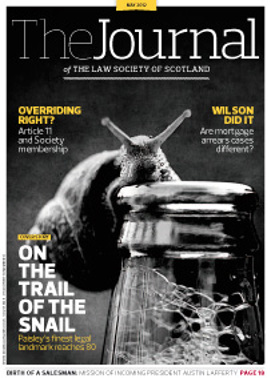Apportionment of price for SDLT
“No man in this country is under the smallest obligation, moral or other, so to arrange his legal relations to his business or to his property as to enable the Inland Revenue to put the largest possible shovel into his stores” (Lord President Clyde, Ayrshire Pullman Motor Services v IRC (1929) 14 TC 754).
Times move on. HM Revenue & Customs has warned recently that “where HMRC find property sale arrangements that have been artificially structured to avoid paying the correct amount of SDLT, these will be actively challenged, through the courts where appropriate”. If HMRC is successful in challenging an SDLT arrangement entered into with the sole intent of avoiding the amount of SDLT properly payable, purchasers could be liable to pay the whole of the SDLT plus interest and potentially a penalty. HMRC can currently challenge SDLT “schemes” up to four years after the effective date of the transaction; this can be extended if there has been a careless or deliberate error in submitting the SDLT return. The whole climate is clearly moving against tax avoidance, artificial or otherwise.
Conveyancers need to bear in mind that under the SDLT regime, the buyer’s solicitor is submitting a formal tax return, as agent, on behalf of the client. If you knowingly provide information in support of a tax return that is incorrect, HMRC could impose a penalty on you of £3,000 per submission. Furthermore, your papers in relation to any client may be open to inspection on a notice given by HMRC.
When considering apportionment of the price in missives between heritage and moveables, members are reminded that HMRC will consider allocations of the price to moveable items in conveyancing transactions solely or mainly on the basis of reducing the charge to SDLT as potentially fraudulent. The Finance Act 2003, sched 4, para 4(1) requires any apportionment between heritage and moveables in the price paid for a property to be “on a just and reasonable basis”. HMRC is likely to look very closely at apportionments that have the effect of reducing the percentage band of SDLT payable, or indeed those that bring the price attributable to the heritage within the nil rate threshold. This type of arrangement could result in missives being considered unenforceable as being contrary to public policy, as was stated in Saunders v Edwards [1987] 2 All ER 651 by Nicholls LJ.
In the past, it was usual for buyers and sellers to set out the amounts to be apportioned between heritage and moveables in missives. While as a matter of contract, that is an issue between the parties, HMRC will consider any irregular apportionment to be the responsibility of the purchaser. It is the purchaser’s duty to pay the correct amount of SDLT due on any land transaction, and irregular apportionments pursued by HMRC will, in the first instance, be the responsibility of the purchaser in terms of any penalty and interest. However, agents need to be aware that HMRC can look into a seller’s involvement in facilitating an arrangement conceived with the sole purpose of reducing the amount of tax properly due. In this circumstance, sellers’ agents must also consider their duties and responsibilities as solicitors. Sellers’ agents should not agree to apportionments in missives which are unjustifiably contrived to reduce the amount of SDLT due. Valuations of moveable items may be advised in appropriate circumstances.
While a purchaser of heritable property is free to use honest and proper tax planning to mitigate its tax liability, purchasers will place reliance on you as solicitor to act with integrity, cognisant of whether the SDLT return you make as an agent is in their interests. Solicitors must always act in a way that maintains the trust the public places in them and the provision of legal services.
If you act for a lender as well as the buyer, robust consideration needs to be given to whether any arrangement could prejudice the interests of the lender.
Finally, practitioners should always bear in mind their responsibilities for compliance with anti-money laundering procedures. If you are asked to give effect to an irregular apportionment conceived to avoid or artificially reduce the amount of SDLT payable, this may bring the transaction within the ambit of anti-money laundering legislation, with all the resulting administrative and reporting requirements.
In this issue
- Arguments in store
- Farming the constitution
- Willing to wound, yet afraid to strike?
- Deferred consideration – worth the paper?
- OSCR: the secondees' perspective
- To efficiency and beyond
- Reading for pleasure
- Opinion column: Fraser Tait
- Council profile
- Book reviews
- President's column
- Wind farms: a challenge to registration
- Snail of the century
- Rights both ways
- Sell, sell, sell
- RBS v Wilson: light in the tunnel?
- Take the heat out
- Prepare for case management
- Looking into the past
- Migrant days numbered
- CPI - the story so far
- Brighton declares
- Mary Mary quite contrary?
- How to avoid that Guarantee Fund interview, and worse...
- Law reform roundup
- Apportionment of price for SDLT
- Business checklist
- Practical guide to legal risks
- Ask Ash






